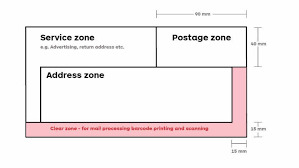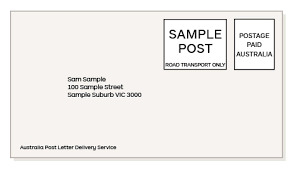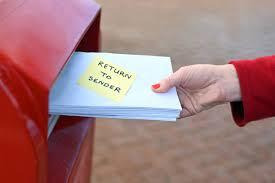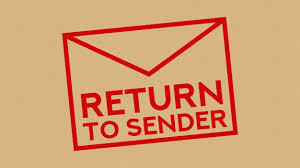#returnmail
Explore tagged Tumblr posts
Text
How Does Address Verification API Work?
In an increasingly digital world, maintaining accurate address information is crucial for businesses. Address Verification APIs are powerful tools that help ensure address data is correct and up-to-date. These APIs validate, standardize, and, in some cases, enrich address information in real-time, reducing errors and improving data quality. This article explores how Address Verification APIs work and the benefits they offer.

What is an Address Verification API?
An Address Verification API is a web service that validates and corrects address data. It checks addresses against official postal databases to ensure they are accurate and formatted correctly. These APIs can be integrated into various systems, including e-commerce platforms, CRM systems, and mobile apps, to verify addresses at the point of entry.
How Address Verification APIs Work
Address Verification APIs operate through a series of steps that involve data input, validation, standardization, and response. Here’s a detailed look at each step:
1. Data Input
The process begins when an address is entered into a system, such as during a checkout process on an e-commerce site or when a new customer fills out a registration form. The entered address is then sent to the Address Verification API for validation.
2. Data Transmission
The address data is transmitted to the API endpoint through an HTTP request. This request includes the address details such as street, city, state, postal code, and country. Depending on the API provider, additional information like apartment numbers or secondary address lines can also be included.
3. Validation
Upon receiving the request, the Address Verification API cross-references the provided address against a comprehensive database of postal addresses. These databases are often maintained by postal authorities or specialized data providers. The API checks the address for accuracy, ensuring that each component (street name, number, city, postal code, etc.) is valid and correctly spelled.
4. Standardization
Once the address is validated, the API standardizes it according to the postal service’s formatting rules. Standardization involves adjusting the address to a consistent format, which might include abbreviating street types (e.g., “Street” to “St.”), ensuring consistent casing (e.g., all uppercase), and adding necessary postal codes or country codes. This step is crucial for ensuring that addresses are uniformly formatted, which helps in efficient mail sorting and delivery.
5. Response
After validation and standardization, the API returns a response to the requesting system. This response includes the verified and standardized address. In cases where the address is incomplete or incorrect, the API may also provide suggestions or corrections to help the user amend the address.
6. Error Handling
If the API encounters an address that cannot be validated, it returns an error message explaining the issue. This feedback can prompt users to re-enter their address or provide additional details. Error handling is a critical aspect of the API, as it helps maintain data integrity and guides users towards providing accurate information.
Benefits of Address Verification APIs
Address Verification APIs offer numerous benefits to businesses across various industries:
1. Improved Data Quality
By validating and standardizing addresses at the point of entry, these APIs ensure that customer databases contain accurate and up-to-date information. This reduces the likelihood of errors and ensures efficient communication and delivery processes.
2. Cost Savings
Reducing mail returns and delivery failures translates into significant cost savings. Accurate addresses mean fewer undeliverable shipments, lower postal costs, and reduced labor for manual corrections.
3. Enhanced Customer Experience
Customers benefit from faster and more reliable deliveries when their addresses are validated and corrected in real-time. This leads to higher customer satisfaction and loyalty.
4. Operational Efficiency
Integrating Address Verification APIs into business processes streamlines operations by automating address validation and correction. This reduces the need for manual intervention and speeds up order processing and fulfillment.
5. Compliance and Standardization
For businesses operating internationally, Address Verification APIs ensure compliance with various postal standards and formats. This is particularly important for meeting the requirements of different postal authorities and avoiding delivery issues.
6. Fraud Prevention
Accurate address data can help prevent fraudulent activities, such as fake orders or identity theft. By ensuring that addresses are valid and associated with legitimate entities, businesses can reduce the risk of fraud.
Conclusion
Address Verification APIs are indispensable tools for businesses that rely on accurate address data for their operations. By validating and standardizing addresses in real-time, these APIs improve data quality, reduce costs, enhance customer experience, and boost operational efficiency. As businesses continue to digitalize their processes, the importance of integrating reliable Address Verification APIs will only grow, ensuring accurate and efficient communication and delivery across the board.
youtube
SITES WE SUPPORT
Verify Return Address – Wix
0 notes
Text
Navigating Canada’s Postal System: A Breakdown of Current Postage Rates
Canada’s postal system is a vital service connecting millions of people and businesses across the country. Whether sending a postcard to a loved one or shipping a parcel internationally, understanding the current postage rates ensures that your mail reaches its destination efficiently and without unnecessary delays. This guide delves into the structure of Canada’s postal rates, the factors influencing them, and how to save money when sending mail.

Understanding Canada Post’s Pricing Structure
Canada Post calculates postage rates based on several factors:
Mail Type: Standard letters, non-standard mail, oversized mail, and parcels all have different rate categories.
Destination: Rates vary for domestic, U.S., and international destinations.
Weight and Dimensions: Heavier and larger items cost more to send.
Delivery Speed: Services like Priority, Xpresspost, and Regular Mail offer varying levels of speed and tracking.
Current Postage Rates (2024)
Standard Letter Mail (Domestic):
Up to 30g: CAD 1.07 (when using stamps).
30g–50g: CAD 1.30.
U.S. Destinations:
Up to 30g: CAD 1.30.
30g–50g: CAD 2.00.
International Destinations:
Up to 30g: CAD 2.71.
30g–50g: CAD 3.88.
For parcels, rates depend on the size and destination. Using Canada Post’s online rate calculator can help estimate costs accurately.
Saving on Postage Costs
Buy in Bulk: Purchasing stamps in booklets or rolls often comes with discounts.
Use Permanent Stamps: These can be used regardless of future rate increases.
Leverage Small Business Discounts: Canada Post offers reduced rates for frequent senders through programs like Solutions for Small Business.
Optimize Packaging: Keeping your items lightweight and within standard dimensions helps reduce costs.
Additional Services
Canada Post provides value-added services such as tracking, signature confirmation, and insurance for higher-value items. These services ensure peace of mind for important mail.
Eco-Friendly Mailing Tips
To align with global sustainability trends, consider using biodegradable packaging materials and consolidating shipments to reduce your carbon footprint.
youtube
SITES WE SUPPORT
Write Return Mails – Wix
0 notes
Photo

Have you ever received mail that didn't belong to you and you had to write "return to sender" so that it would go back to the person who sent it. Well as it is in the natural so is it in the spirit. NEWS FLASH: you do not have to accept what doesn't belong to you. Guilt, negativity, games, manipulation and control, gossip, lies, etc. Anything that will cause your spirit to be down or low. That will tell you anything different than who you are. Now if there is some truth, then it is up to you to get it right. You have the power and control over what enters into your life and into your spirit. Reject that thing! #RETURNTOSENDER 📤📬 #returns #return #void #reject #notmine #returnmail #object #overturn #notreceiving
0 notes
Text
Mail Return Solutions That Companies Can Employ
Mail return is a significant challenge for companies, especially those involved in direct mail marketing, subscription services, and e-commerce. Returned mail can lead to increased operational costs, lost sales opportunities, and customer dissatisfaction. However, there are several solutions companies can employ to mitigate mail return issues effectively.

1. Address Verification Services
One of the most effective ways to reduce mail returns is by using address verification services. These services verify and standardize addresses at the point of entry, ensuring that the addresses entered into a company's system are accurate and up-to-date. Address verification can be integrated into online forms, CRM systems, and other customer databases. By catching errors before mail is sent out, companies can significantly reduce the incidence of returned mail.
2. National Change of Address (NCOA) Updates
The United States Postal Service (USPS) offers a National Change of Address (NCOA) service that updates address information when individuals or businesses move. By regularly cross-referencing their customer databases with the NCOA registry, companies can ensure they have the most current addresses. This is especially crucial for businesses with recurring mailings, such as subscription services or billing departments.
3. Return Mail Processing Services
There are third-party providers that specialize in return mail processing. These services handle returned mail on behalf of companies, updating customer records and attempting to correct and resend the mail. This can be particularly beneficial for companies that receive a high volume of returned mail, as it offloads the processing burden and ensures that corrective actions are taken promptly.
4. Enhanced Data Collection Techniques
Improving how data is collected in the first place can also help reduce mail returns. Companies should ensure that they have multiple points of validation during data entry, such as mandatory fields, drop-down menus for address components, and real-time validation against postal databases. Encouraging customers to double-check their entries before submission can also reduce the likelihood of errors.
youtube
SITES WE SUPPORT
Verify Return Address – Wix
0 notes
Text
Reasons to Return to Sender Auspost
“Return to Sender” is a postal service offered by Australia Post (Auspost) that redirects undeliverable mail back to the sender. Various reasons might necessitate the return of mail, ensuring that it either reaches the correct recipient or informs the sender of delivery issues.

Common Reasons for Returning Mail
Incorrect Address: The address provided is incomplete or inaccurate, preventing delivery.
Unknown Recipient: The recipient does not live at the address, or the name is not recognized.
Moved: The recipient has moved without providing a forwarding address.
Refused: The recipient declines to accept the mail.
Unclaimed: The mail remains uncollected at the post office for a specified period.
Insufficient Postage: The postage paid is inadequate for the mail's delivery.
Security Concerns: Items that pose a security risk or violate postal regulations.
How “Return to Sender” Works
When mail cannot be delivered, Auspost marks it with a “Return to Sender” label, noting the reason for non-delivery. The process involves:
Initial Attempt: The postal worker attempts to deliver the mail.
Undeliverable Decision: If the mail cannot be delivered, it is marked with the reason.
Return Process: The mail is returned to the sender’s address, if available.
Steps for Senders
Verify Address: Always double-check the recipient’s address before sending mail.
Include Return Address: Clearly include your return address on the envelope or package.
Use Correct Postage: Ensure the correct amount of postage is affixed to avoid delays.
Notify Recipients: Inform recipients to expect your mail, especially for important documents or packages.
Handling Returned Mail
When you receive returned mail, take the following steps:
Review the Reason: Check the “Return to Sender” label to understand why it was undeliverable.
Correct Errors: If the address was incorrect, update it before resending.
Contact Recipient: If possible, contact the recipient to confirm the correct address.
Resend or Refund: Depending on the situation, resend the mail or process a refund if applicable.
Understanding the “Return to Sender” service helps both senders and recipients address mail delivery issues promptly, ensuring effective communication and reducing postal inefficiencies. By adhering to best practices and staying informed about postal regulations, you can minimize the occurrence of undeliverable mail and enhance the overall mail delivery experience.
youtube
SITES WE SUPPORT
Verify Return Address – Wix
0 notes
Text
Writing a PO Box Address
A PO Box, or Post Office Box, is a secure and private way to receive mail. It is commonly used by individuals and businesses who require a reliable mailing address independent of their physical location. Writing a PO Box address correctly is essential to ensure mail delivery without delay or confusion.

Why Use a PO Box?
Privacy: A PO Box offers a layer of anonymity since it doesn’t reveal your physical address.
Security: PO Boxes are located in secured postal facilities, reducing the risk of theft or damage.
Convenience: Ideal for people who move frequently or businesses without a physical office.
Addressing a PO Box
When addressing mail to a PO Box, it’s crucial to follow the standard format to ensure it is processed correctly by postal services. Here’s the typical format:
Recipient’s Name or Business Name
PO Box Number
City
State/Province
Postal Code
Country (if applicable)
Steps to Addressing a PO Box
Recipient Information: Write the recipient’s name or business name on the first line. Ensure it’s clear and correctly spelled.
PO Box Number: Write “PO Box” followed by the box number. Avoid using the “#” symbol as it can lead to confusion.
City and State/Province: Include the city and state or province where the PO Box is located.
Postal Code: Ensure the correct postal code is included to facilitate prompt delivery.
Country: For international mail, include the country name in uppercase letters on the last line.
Common Mistakes to Avoid
Incorrect Box Number: Double-check the PO Box number for accuracy.
Missing Information: Ensure all parts of the address are included, especially the postal code.
Handwriting: Write legibly to avoid misinterpretation by postal workers.
Using a PO Box is a practical solution for secure and private mail handling. By following the correct addressing format, you ensure your mail is delivered promptly and accurately.
youtube
SITES WE SUPPORT
Verify Return Address – Wix
0 notes
Text
Addressing an Envelope for Defence Personnel
Addressing an envelope for defence personnel is a crucial task that ensures your mail reaches the intended recipient, whether they are on a military base, deployed overseas, or stationed at a different location. Properly addressing the envelope demonstrates respect and consideration for the recipients' service, while also adhering to the protocols set by military and postal services.

Understanding the Importance of Proper Addressing
Defence personnel often move frequently and may be stationed in remote or secure locations. Incorrectly addressed mail can lead to significant delays, or worse, it may never reach the recipient. Following the correct format helps streamline the process, ensuring that mail is delivered efficiently.
Address Format for Domestic Military Bases
When sending mail to defence personnel within your country, the address format is similar to civilian addresses with a few key differences. Here’s an example format:
Recipient’s Rank and Full Name
Unit or Regiment
Base Name
Street Address or PO Box
City/Town
State/Province
Postal Code
Country (if applicable)
Address Format for Overseas Deployment
Mail sent to deployed personnel usually follows a different structure, often utilizing a specific military postal service. Here’s a common format:
Recipient’s Rank and Full Name
Unit or Regiment
Operation or Base Name
APO/FPO/DPO Address (Army Post Office, Fleet Post Office, Diplomatic Post Office)
City (APO/FPO/DPO)
State (AA/AE/AP) (AA for Armed Forces Americas, AE for Armed Forces Europe, AP for Armed Forces Pacific)
Postal Code
Special Considerations
Security Concerns: Avoid including specific location details that could compromise operational security.
Customs Declarations: When sending packages, especially internationally, include a customs declaration form.
Return Address: Always include your return address in case the mail cannot be delivered.
By adhering to these guidelines, you ensure that your mail reaches defence personnel efficiently, maintaining a vital link between them and their loved ones.
youtube
SITES WE SUPPORT
Verify Return Address – Wix
1 note
·
View note
Text
Delivery Guarantee For Return Mail Live At Your Address
Managing return mail is a challenge for businesses and individuals alike. Canada Post's delivery guarantee for return mail ensures that undeliverable or misaddressed mail is returned promptly and reliably. This service adds a layer of security and accountability to the mailing process.

What is the Delivery Guarantee for Return Mail?
The delivery guarantee promises that return mail, such as undeliverable letters or parcels, will be redirected to the sender's address without unnecessary delays. It is particularly useful for businesses handling large volumes of mail.
How the Guarantee Works
Verification: Canada Post verifies that the mail cannot be delivered to the recipient.
Routing to Sender: The undeliverable item is routed back to the return address provided on the envelope or package.
Notification: Businesses or senders may receive notifications if tracking services are in place.
Benefits of the Delivery Guarantee
Reduced Mail Loss: Ensures mail is not discarded or lost in transit.
Improved Customer Relations: Prompt returns allow businesses to address issues quickly.
Tracking and Transparency: Track return mail and maintain accountability.
Steps to Ensure Proper Handling of Return Mail
Include a Clear Return Address: Ensure the return address is prominently displayed.
Use Durable Packaging: Secure packaging minimizes damage during transit.
Employ Tracking Services: Opt for Canada Post tracking options to monitor return mail.
Tips for Businesses Using Return Mail Services
Implement address verification software to minimize errors.
Regularly update recipient databases to prevent undeliverable mail.
Consider using prepaid return labels for a seamless customer experience.
Conclusion
Canada Post’s delivery guarantee for return mail, coupled with their Return to Sender services, simplifies the mailing process for individuals and businesses. By understanding how these services work and implementing best practices, you can ensure that undeliverable mail is handled efficiently, safeguarding your correspondence and maintaining trust.
youtube
SITES WE SUPPORT
Write Return Mails – Wix
0 notes
Text
Return to Sender Postage For Canada Post Parcels
Receiving undeliverable mail or parcels can be a frustrating experience. Canada Post offers "Return to Sender" services to address this issue, ensuring parcels reach their intended destinations or return to the sender efficiently. Let’s explore how this service works, who benefits, and the costs involved.

What Does "Return to Sender" Mean?
"Return to Sender" is a service provided by Canada Post to handle undeliverable parcels. If a delivery cannot be completed due to incorrect addresses, recipient refusal, or unclaimed mail, the parcel is returned to the sender.
Common Reasons for Return to Sender
Incorrect Address: Errors in the recipient's address prevent delivery.
Recipient Moved: If the recipient has relocated without updating their address, the parcel cannot be delivered.
Unclaimed Parcels: Items left at postal offices for extended periods are returned if not collected.
Refused Delivery: The recipient declines to accept the parcel.
Postage Requirements for Return Mail
When a parcel is returned to the sender, Canada Post may require additional postage depending on the circumstances:
Prepaid Return Labels: If the sender includes a prepaid return label, no additional costs are incurred.
Unpaid Returns: If no return label is provided, Canada Post charges the sender for return postage based on the parcel’s size, weight, and destination.
Steps to Use Return to Sender Services
Mark the Parcel: Clearly indicate "Return to Sender" on the package.
Provide Sender Address: Ensure the sender's address is visible on the parcel.
Drop It Off: Hand the parcel to a Canada Post location or place it in a mailbox.
Tips for Avoiding Return to Sender Situations
Verify recipient addresses before sending.
Provide a prepaid return label for easy returns.
Use Canada Post’s tracking services to monitor delivery.
Who Benefits from Return to Sender Services?
Both senders and recipients gain from this service:
Senders: Avoid lost parcels and maintain customer satisfaction.
Recipients: Ensure undeliverable parcels reach the correct sender for follow-up action.
youtube
SITES WE SUPPORT
Write Return Mails – Wix
0 notes
Text
Navigating the Basics of Writing a Cheque in Canada
In the digital age, where online banking and e-transfers dominate, writing a cheque may seem like an outdated practice. However, cheques remain a vital tool in various scenarios, such as paying rent, making donations, or issuing refunds. Understanding the correct way to write a cheque in Canada ensures smooth transactions and prevents errors or potential fraud. Let’s explore the basics of cheque writing to help you stay financially savvy.

What is a Cheque?
A cheque is a written, dated, and signed document instructing a financial institution to pay a specific amount of money to a designated person or entity. While simple in concept, filling out a cheque incorrectly can lead to payment delays or disputes.
Step-by-Step Guide to Writing a Cheque in Canada
Write the Date Begin by entering the date in the upper right-hand corner. Use the standard Canadian date format (YYYY/MM/DD) to avoid confusion.
Payee Name In the "Pay to the Order of" line, write the name of the individual or organization receiving the funds. Double-check the spelling, as inaccuracies may render the cheque invalid.
Amount in Numbers Clearly write the amount in numerical format in the designated box. Include cents using a decimal point (e.g., 123.45).
Amount in Words Spell out the amount in words on the line below the payee name. For example, write "One hundred twenty-three dollars and forty-five cents." This reduces ambiguity and serves as a secondary verification.
Memo Line (Optional) The memo line, located at the bottom left, allows you to indicate the purpose of the cheque (e.g., “Rent for April”). While optional, it can be helpful for record-keeping.
Signature Sign the cheque at the bottom right. Your signature authorizes the payment and ensures the cheque is legally binding.
Tips for Secure Cheque Writing
Use a Pen: Always use a pen to prevent alterations.
Avoid Blank Spaces: Fill out all lines completely to deter fraud.
Cross Through Unused Areas: Draw a line through any blank spaces on the cheque to eliminate opportunities for tampering.
When to Use Cheques
Despite the popularity of digital payment methods, cheques are still widely used for:
Large transactions that require documentation.
Payments to businesses or landlords that prefer physical cheques.
Gifts or donations to organizations.
Understanding Post-Dated and Cancelled Cheques
A post-dated cheque is dated for a future day, ensuring the recipient cannot cash it until that date. A cancelled cheque, on the other hand, is a voided cheque often used to provide banking information for direct deposits.
youtube
SITES WE SUPPORT
Write Return Mails – Wix
0 notes
Text
How to Write a Cheque in Canada: A Simple, Easy-to-Follow Guide
Writing a cheque in Canada remains a valuable skill, despite the growing popularity of digital payments. Cheques are still widely used for rent payments, business transactions, and other formal financial exchanges. Here's a step-by-step guide to writing cheque correctly:

1. Start with the Date
The date is written in the top-right corner of the cheque. Use the format: YYYY-MM-DD. For instance, write 2024-11-18 for November 18, 2024. A properly dated cheque ensures timely processing.
2. Write the Payee's Name
In the "Pay to the order of" field, clearly write the name of the individual or organization receiving the payment. Ensure correct spelling to avoid delays or rejections.
3. Enter the Amount in Numbers
In the box provided, write the amount you wish to pay in numbers, including cents (e.g., 100.50). Ensure the decimal point is clear to avoid misunderstandings.
4. Spell Out the Amount in Words
Write the amount in words on the line below the payee's name. For instance, $100.50 would be written as: "One hundred dollars and fifty cents." Draw a line through any unused space to prevent unauthorized alterations.
5. Add a Memo (Optional)
The memo line, located in the bottom-left corner, is optional but helpful. You can use it to specify the purpose of the payment, such as "November Rent" or "Invoice #12345."
6. Sign the Cheque
Sign the cheque in the bottom-right corner. Your signature must match the one on file with your bank. Without a valid signature, the cheque will not be processed.
7. Review for Accuracy
Before handing over the cheque, double-check all details, including the date, payee name, amount, and signature, to ensure accuracy. Errors could lead to rejected payments or delays.
Important Tips:
Keep Cheques Secure: Store cheques in a safe place to prevent fraud.
Record Your Transactions: Maintain a record of issued cheques in your cheque register or banking app.
Use Ink: Always use a pen to fill out cheques, as pencil markings can be altered.
Benefits of Writing Cheques
Payment Flexibility: Cheques are a preferred payment method for formal transactions.
Control Over Payments: You can specify dates and amounts with precision.
Record Keeping: Cheques provide a paper trail for financial documentation.
Learning how to write a cheque correctly ensures secure and hassle-free transactions, whether for personal or business purposes. While digital alternatives are gaining traction, cheques remain a trusted and reliable payment method in Canada.
youtube
SITES WE SUPPORT
Write Return Mails – Wix
1 note
·
View note
Text
3 Ways to Return to Sender
There are three ways to return mail to the sender. The first way is to simply place it back in your mailbox with a red flag on top. Your postman will pick up your unwanted mail, and you can deface the barcode if you wish. The second way is to write a note to the sender. Depending on your postal service, you can even include a note with your return to sender letter.

If you get a package delivered to the wrong address, you must return it to the sender. This is a quick and easy way to return mail. If your address is not clearly stated, write a note explaining the error. You can leave it in the mailbox to be picked up by the postal worker. However, if you have received a large amount of mail, you should leave it for the postman to collect it and redeliver it to the correct person.
If you receive a large package that you don't want, you can return it to the sender. If the package is too large to fit into your mailbox, repackage it in a larger envelope to make it easier for the sender to find it. If you don't have a letter, you can call the United States Postal Service or visit your local post office. If the mail is not returned, you can also write a letter asking them to stop sending it to you.
youtube
SITES WE SUPPORT
Canada Return Mailing – Wix
SOCIAL LINKS
Facebook Twitter LinkedIn Instagram Pinterest
1 note
·
View note